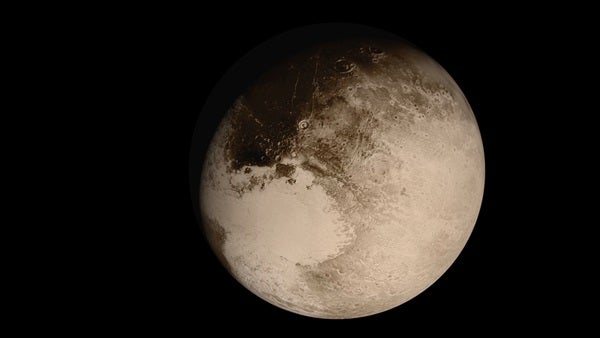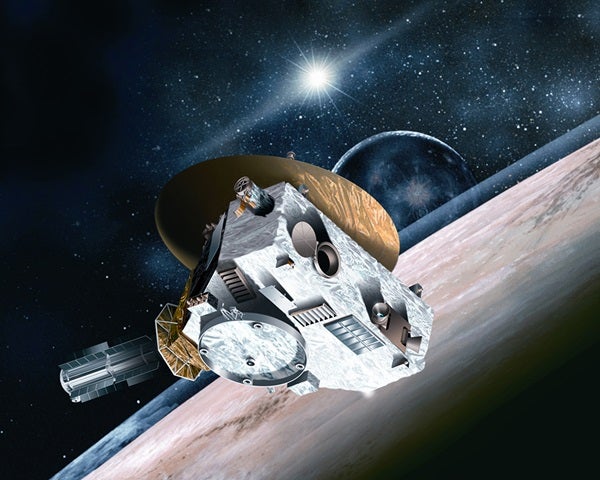Pluto, regardless of the category into which it is sorted, has played a vital role in our understanding of the formation and evolution of our solar system. We now know it is part of a family of objects called the Kuiper Belt, comprised of icy, rocky remnants from the solar nebula’s earliest days. The Pluto system itself is larger than initially believed; its largest moon, Charon, wasn’t discovered until 1978, and only in the past two decades have astronomers uncovered four more tiny moons using the world’s most powerful telescopes.
Circling the Sun on an elliptical orbit tilted relative to the plane of the planets, Pluto takes about 248 (Earth) years to make one trip; the tiny, icy world has not yet completed even a single orbit since its discovery. But despite its distance and its still-controversial status, Pluto remains one of the most beloved and fascinating objects in our solar system. Below, you can find links to some of our favorite articles on the history of Pluto, leading up to its discovery, its naming, and the 2015 flyby. Or we invite you to explore our full library of Pluto articles here: Year of Pluto.
And if, like many, you believe Pluto should regain its place among the rightful planets of our solar system, stay tuned — Astronomy will be featuring an exclusive on the definition of the word planet, and how we might rethink it, in an upcoming magazine issue and online bonus feature.
Looking back before peering ahead: Pluto, an interactive timeline
Explore Pluto’s history with this unique interactive timeline.
Naming Pluto: Strange suggestions for a “dark, gloomy planet”
How did Pluto get its name? You can thank Venetia Burney.
An interview with Jim Christy: How “defective” images revealed Pluto as a double planet
Pluto’s largest moon, Charon, wasn’t even discovered until 1978 — and at first, it wasn’t even thought to be a moon at all.
How a flying telescope proved Pluto has an atmosphere
Before New Horizons, one of the best ways to study Pluto was through occultations that occur when the tiny world passes in front of a background star.
1992 QB1: The first Kuiper Belt object opened a realm of 1,000 Plutos
Apparently alone upon its discovery, we now know that Pluto is just one of thousands of Kuiper Belt objects.
Astronomical artistic license: 40 years of Pluto portaits
Everyone today can point out Pluto in a lineup, thanks to its reddened surface and distinctive “heart.” But what did we think it looked like before our first up-close look in 2015?
The Pluto system: An icy wonderland revealed
As New Horizons’ flyby data began to stream in, we finally took our first look at this distant dwarf planet and its moons.
Would you like to learn more? Check out our free downloadable eBook: Pluto and its moons: Findings from the New Horizons mission
Want to show off Pluto in your very own home? Astronomy magazine’s Pluto globe is for you!











